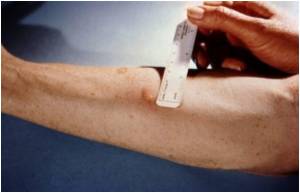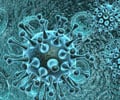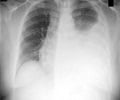The re-emerging threat of tuberculosis (TB) may actually be countered with help from proteins from our bodies, scientists from Ohio are hoping.

"We hope this study will spark interest in understanding the mechanisms which control cell migration to sites of infection, help define the protective immune response to Mycobacterium tuberculosis, and ultimately improve our capacity to predict and/or treat patients with TB," said Gillian Beamer, V.M.D, Dipl. ACVP, Ph.D., a researcher from the Center for Microbial Interface Biology at Ohio State University in Columbus, Ohio who was involved in the work.
Scientists discovered the role and potential benefits of CCL5 by studying mice lacking the gene to make the CCL5 protein and mice with the CCL5 gene. When both groups of mice were infected with Mycobacterium tuberculosis, those lacking CCL5 accumulated fewer protective cells and had more bacteria in the lungs over three to five weeks of infection when compared to the normal mice. After five weeks, differences between the groups were not apparent, leading researchers to conclude that CCL5 did not play a role in long-term infection, but rather in the onset and early protection against infection. Additionally, in humans, altered CCL5 expression may be a predisposing factor leading to TB disease progression.
"Tuberculosis may not be top of mind for most people in the developed world, but TB is a leading cause of global disease and drug resistant forms of TB are an ever increasing problem," said John Wherry, Ph.D., Deputy Editor of the Journal of Leukocyte Biology. "Studies such as these this give us hope that as organisms evolve resistance to current therapies, we can develop promising new approaches to treat infectious disease."
Source-Eurekalert
 MEDINDIA
MEDINDIA



 Email
Email










